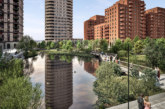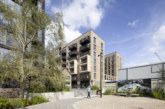
Do we need 500,000 new councils houses? Asks Matthew Warburton, policy advisor at the Association of Retained Council Housing (ARCH).
Theresa May’s government has so far retained its predecessor’s ambition of one million new homes by 2020, even though this was always going to be tough to deliver, and looks to be still harder with Brexit. It means roughly doubling the average number of new homes built annually since 2008, and ARCH has always argued that this cannot be achieved by the private sector alone; councils need to be mobilized to help stimulate such a big increase in output, partly, but not only, by building many more homes themselves.
Over a year ago, SHOUT, the campaign for social housing, published research by Capital Economics examining the economic case for building 100,000 new social rented homes a year. Not only would this go a long way towards meeting the housing shortage and providing many people with a much-needed new home they could not otherwise afford, it would provide a substantial boost to employment and income in the construction and building materials sector. The necessary public sector investment would be repaid over time from rent income and there would be long-term savings in housing benefit as low income households need to rely less on private renting.
In his campaign to remain Labour leader, Jeremy Corbyn adopted the same target, proposing 500,000 new council homes over five years. Other Labour Party figures have queried the case for so much new council housing.
John McTernan, formerly an adviser to Tony Blair, recently wrote in the Financial Times that Britain ‘already has a massive stock of social housing’ and ‘modern consumers do not want to live in the massive monocultural housing estates of the past’. Just one article, but probably symptomatic of the objections any plans for a council housing renaissance will face, not just within the Labour Party — where one might have expected a less hostile climate — but across the political spectrum.
It would be a disastrous setback for the case for council housing if it became an issue on which Smith chose to distinguish himself from Corbyn, particularly on the grounds that the policy would not help Labour win the next election.
Public investment in housing
ARCH, along with other proponents of more council — or social — housing has so far focused on winning the economic and fiscal argument, demonstrating out that recent British Governments’ bias against public investment in housing is irrational and anomalous. But beyond that, we also need to nail the assumption that more council housing means repeating the mistakes of the 1960s and 1970s. Not that this illusion is widespread among those who actually live in or know anything about council housing as it is today, but they are probably no more than a third of the electorate overall and not by any means concentrated in swing constituencies.
We need to spell out that building new council houses for social rent — as part of a wider programme to build homes for sale and market rent — is essential to the creation of genuinely mixed communities. The ‘monocultural’ estates we really need to worry about are those created by private developers for affluent buyers only, pushing everyone else to the margins of the housing market.








